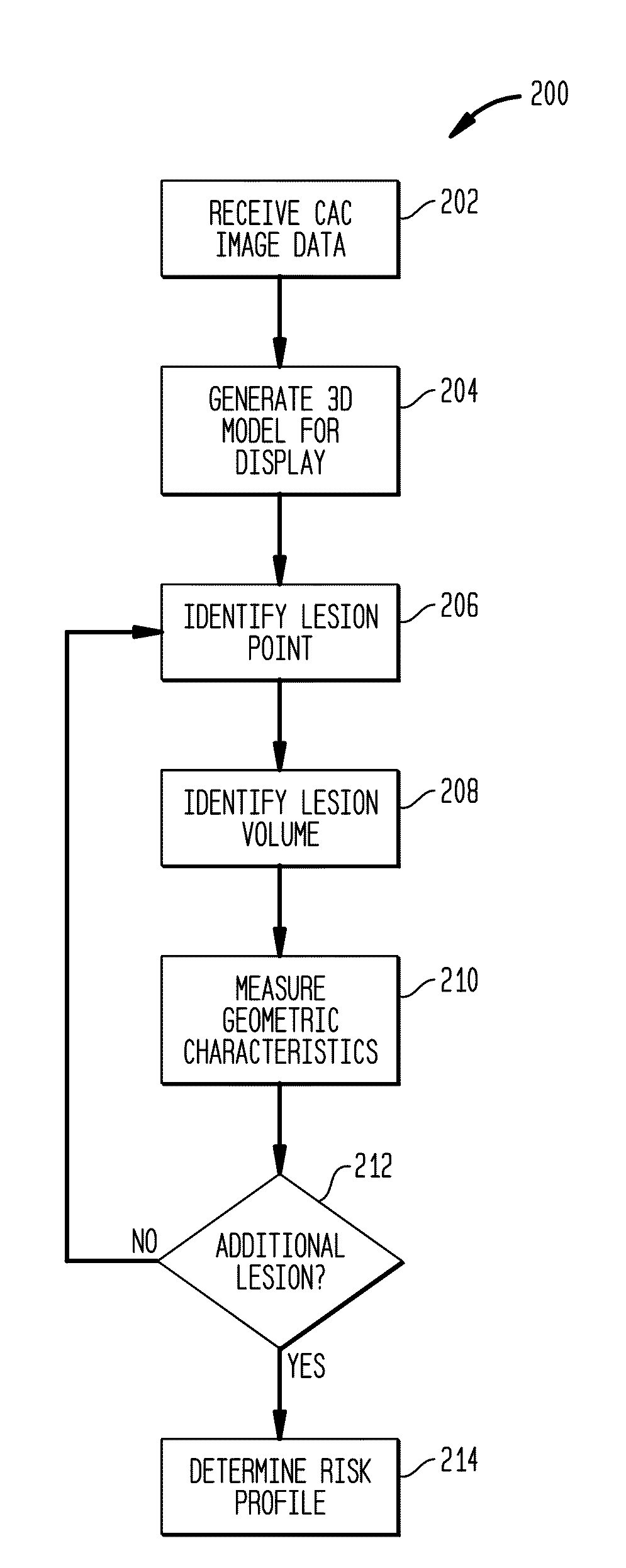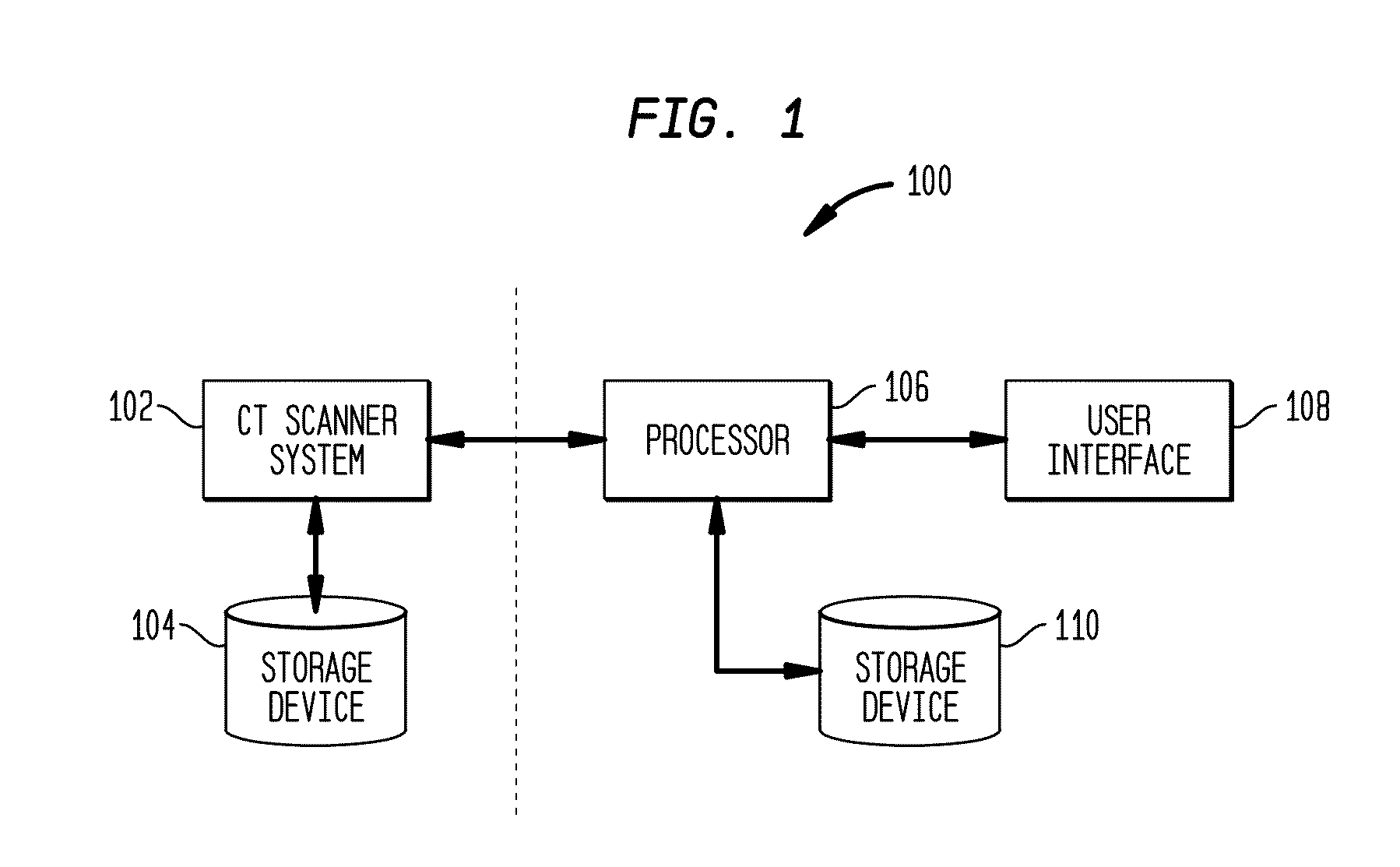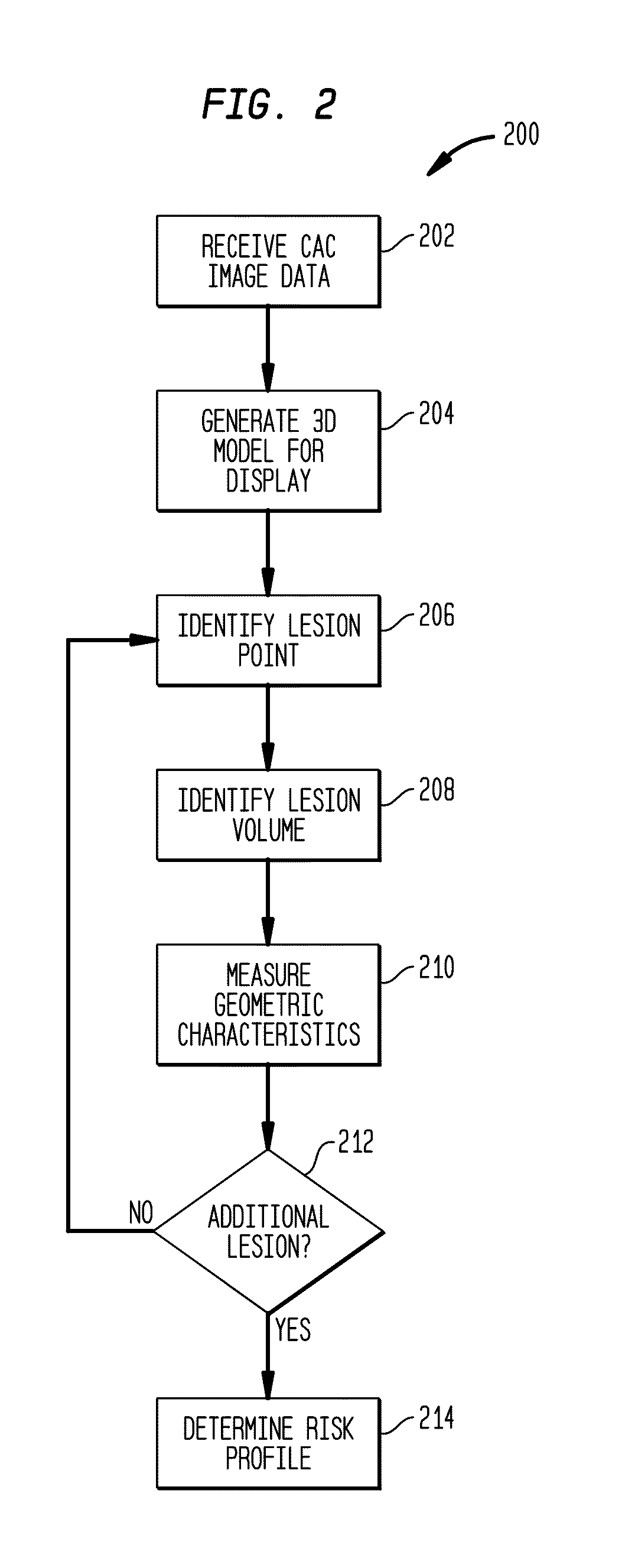System and method for lesion-specific coronary artery calcium quantification
a technology of lesion-specific coronary artery calcium and quantification method, which is applied in the direction of angiography, image enhancement, instruments, etc., to achieve the effect of improving prediction and assessment of cardiac risk and obtaining more data
- Summary
- Abstract
- Description
- Claims
- Application Information
AI Technical Summary
Benefits of technology
Problems solved by technology
Method used
Image
Examples
Embodiment Construction
[0025]Conventional CAC image volume analysis reduces the three-dimensional (3D) volume, to a stack of two-dimensional (2D) slices that form the 3D volume to facilitate processing. The stack 2D slices of 3D data are evaluated and used to identify and quantify the presence of artery calcium, indicative of atherosclerosis. Typically, the presence of calcium within the CAC image volume is evaluated as a whole to determine the calcium burden on the heart depicted in the CAC image volume. These conventional techniques ignore the position of the calcium lesions as well as the geometry and size of individual calcium lesions. To minimize processing, risks of atherosclerosis are evaluated based upon these 2D images and averaged data.
[0026]In contrast, systems and methods described herein use the 3D volume of image data without reducing it to 2D data, avoiding potential errors introduced by representation of 3D data using sets of 2D images. For example, when 3D data is treated as a stack of 2D...
PUM
 Login to View More
Login to View More Abstract
Description
Claims
Application Information
 Login to View More
Login to View More - R&D
- Intellectual Property
- Life Sciences
- Materials
- Tech Scout
- Unparalleled Data Quality
- Higher Quality Content
- 60% Fewer Hallucinations
Browse by: Latest US Patents, China's latest patents, Technical Efficacy Thesaurus, Application Domain, Technology Topic, Popular Technical Reports.
© 2025 PatSnap. All rights reserved.Legal|Privacy policy|Modern Slavery Act Transparency Statement|Sitemap|About US| Contact US: help@patsnap.com



